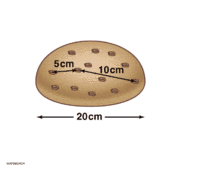
Photo from wikipedia
The heliocentric redshifts (z hel) reported for 150 type Ia supernovae in the Pantheon compilation are significantly discrepant from their corresponding values in the JLA compilation. Both catalogues include corrections… Click to show full abstract
The heliocentric redshifts (z hel) reported for 150 type Ia supernovae in the Pantheon compilation are significantly discrepant from their corresponding values in the JLA compilation. Both catalogues include corrections to the redshifts and magnitudes of the supernovae to account for the motion of the heliocentric frame relative to the ‘CMB rest frame’, as well as corrections for the directionally coherent bulk motion of local galaxies with respect to this frame. The latter is done employing modelling of peculiar velocities which assume the ΛCDM cosmological model but nevertheless provide evidence for residual bulk flows which are discordant with this model (implying that the observed Universe is in fact anisotropic). Until recently such peculiar velocity corrections in the Pantheon catalogue were made at redshifts exceeding 0.2 although there is no data on which to base such corrections. We study the impact of these vexed issues on the 4.4σ discrepancy between the Hubble constant of H 0 = 67.4 ± 0.5 km s−1 Mpc−1 inferred from observations of CMB anisotropies by Planck assuming ΛCDM, and the measurement of H 0 = 73.5 ± 1.4 km s−1 Mpc−1 by the SH0ES project which extended the local distance ladder using type Ia supernovae. Using the same methodology as the latter study we find that for supernovae whose redshifts are discrepant between Pantheon and JLA with Δz hel > 0.0025, the Pantheon redshifts favour H 0 ≃ 72 km s−1 Mpc−1, while the JLA redshifts favour H 0 ≃ 68 km s−1 Mpc−1. Thus the discrepancies between SNe Ia datasets are sufficient to undermine the claimed ‘Hubble tension’. We further note the systematic variation of H 0 by ∼6–9 km s−1 Mpc−1 across the sky seen in multiple datasets, implying that it cannot be measured locally to better than ∼10% in a model-independent manner.
Journal Title: Classical and Quantum Gravity
Year Published: 2021
Link to full text (if available)
Share on Social Media: Sign Up to like & get
recommendations!